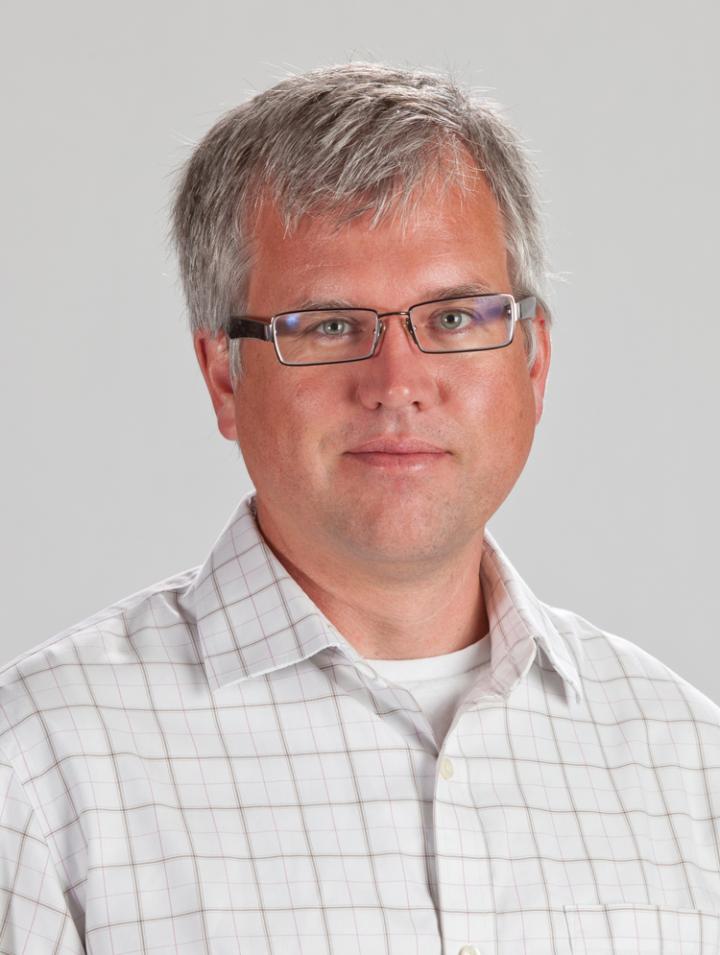
Credit: The Scripps Research Institute
JUPITER, FL – December 29, 2016 – Breast cancer researchers from the Florida campus of The Scripps Research Institute (TSRI) have developed a novel approach for identifying how chemicals in the environment–called environmental estrogens–can produce infertility, abnormal reproductive development, including "precocious puberty," and promote breast cancer.
Environmental estrogens work by binding to the estrogen receptor, a protein in cells that guides sexual maturation and reproduction. The new research shows how high-resolution imaging techniques could give scientists a window into how exposure to these chemicals may impact public health.
This research method could also be used to speed up the discovery of new drugs for breast cancer and many other diseases, added study senior author Kendall Nettles, associate professor at TSRI.
The study was published online ahead of print in the journal Cell Chemical Biology.
Taking Snapshots of a Crucial Receptor
Environmental estrogens control the estrogen receptor's activity by changing its shape, which can mimic the effects of estrogen. These chemicals can also block receptor activity, as seen with the breast cancer therapy tamoxifen.
These changes are often exceedingly small, in the sub-ångström range (one ångström is equal to one ten-billionth of a meter). In fact, changes to even a single atom in a chemical or endocrine therapy drug can often drive widely divergent outcomes, but the resolution of the typical crystal structure does not allow visualization of these small changes.
Nettles calls the approach in the new study "super-resolution x-ray crystallography."
X-ray crystallography is a technique that produces a snapshot of the receptor's 3-D atomic structure. Like the images produced by photography or microscopy, x-ray crystal structures have a certain resolution, or level of detail, that can be visualized. With optical microscopy, super-resolution imaging–a discovery for which researchers were awarded the Nobel Prize in 2014–can be achieved by combining many images to produce a sharper picture.
Nettles and his colleagues reasoned that they could use a similar approach with x-ray crystallography to compare molecular snapshots, or structures, and better understand how estrogenic chemicals control receptor activity.
Developing a Framework for Drug Design
They found that by combining data about structural disturbances from many structures with activity profiles of their ligands (the estrogenic chemicals), researchers can identify the sub-ångström details that determine endocrine disruption.
"Our novel approach offers a framework for understanding the diverse effects of environmental estrogens and other endocrine disruptors, furthering efforts to develop improved breast cancer therapies," said TSRI Research Associate Jerome C. Nwachukwu, first author of the study. "This approach can also be applied to other allosteric receptors."
Super-resolution x-ray crystallography can also be applied to the large groups of receptors that comprise the targets for most known drugs. With structure-based drug design, chemists can use this new approach to visualize how to modify drug-candidate chemicals to promote the desirable therapeutic profile.
###
In addition to Nettles and Nwachukwu, other authors of the study, titled "Systems Structure Biology Analysis of Ligand Effects on ERa Predicts Cellular Response to Environmental Estrogens and Anti-Hormone Therapies," are Sathish Srinivasan, Nelson E. Bruno, Jason Nowak, Nicholas J. Wright, Erumbi Rangarajan, Tina Izard and Douglas J. Kojetin of TSRI; Xin-Qui Yao and Barry J. Grant of the University of Michigan; Olivier Element of Weil Cornell Medical College; John A. Katzenellenbogen of the University of Illinois; and Filippo Minutolo of the Università di Pisa, Italy.
The study was supported by the National Institutes of Health (grant numbers PHS 5R37DK015556, 5R01DK077085 and 2R01GM070862-10A1), The BallenIsles Men's Golf Association, The Frenchman's Creek Women for Cancer Research, The National Science Foundation (NSF award 1359369) and the University of Michigan.
About The Scripps Research Institute
The Scripps Research Institute (TSRI) is one of the world's largest independent, not-for-profit organizations focusing on research in the biomedical sciences. TSRI is internationally recognized for its contributions to science and health, including its role in laying the foundation for new treatments for cancer, rheumatoid arthritis, hemophilia, and other diseases. An institution that evolved from the Scripps Metabolic Clinic founded by philanthropist Ellen Browning Scripps in 1924, the institute now employs more than 2,500 people on its campuses in La Jolla, CA, and Jupiter, FL, where its renowned scientists–including two Nobel laureates and 20 members of the National Academies of Sciences, Engineering or Medicine–work toward their next discoveries. The institute's graduate program, which awards PhD degrees in biology and chemistry, ranks among the top ten of its kind in the nation. For more information, see http://www.scripps.edu.
Media Contact
Madeline McCurry-Schmidt
[email protected]
858-784-9254
@scrippsresearch
http://www.scripps.edu
############
Story Source: Materials provided by Scienmag





